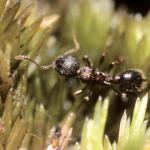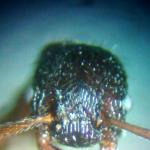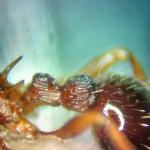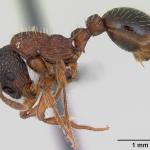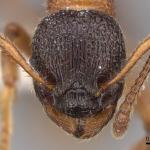Of the twelve British species of Myrmica, this is one of the less widely distributed and least well known in terms of its biology and ecology. Morphologically, M. sulcinodis is typical of the genus in possessing a two-segmented 'waist', pectinate spurs on all tibiae, well developed propodeal spines and a sting in the females. The shape of the antennal scape provides a good character for separation from other British Myrmica. Females of M. sulcinodis are also characterised by a deep red and black coloration and pronounced rugose sculpturing of the cuticle.
This ant is largely restricted to well-drained upland heather moors in south west and northern England and in Scotland. It also occurs locally on some lowland heaths in southern England. There are a few records from Wales but none from Ireland. Overseas, occurs from arctic Scandinavia south to Portugal and east to eastern Siberia.
This species is not regarded as being scarce or threatened.
Throughout its Palaearctic range, M. sulcinodis is considered a typical species of mountainous habitat. In Britain, it can be common in some areas of heather moorland. However, only certain types of moorland appear suitable and nest sites tend to be in exposed, dark, well drained peat soils supporting close growing vegetation. The species does not survive in tall rank heather unless there are sufficient bare patches. In sandy lowland heath, the species occurs mainly in the damper areas of short heather or bog vegetation.
The mating flights of M. sulcinodis usually occur in August or early September.
Myrmica sulcinodis usually nests under stones or in clumps of peat exposed to the sun; occasionally small mounds of vegetation may be raised for brood incubation. Colonies are relatively small, often consisting of only a few hundred workers and a single queen.
Little is known about the foraging patterns, behaviour or main food source of this ant. The habitats in which it nests rarely support large aphid populations and it has only occasionally been reported to take aphid honeydew. The workers are usually found foraging alone, presumably searching mainly for small invertebrates or scavenging dead animal material.
No parasitic ant species is known to be associated with M. sulcinodis.
2001


